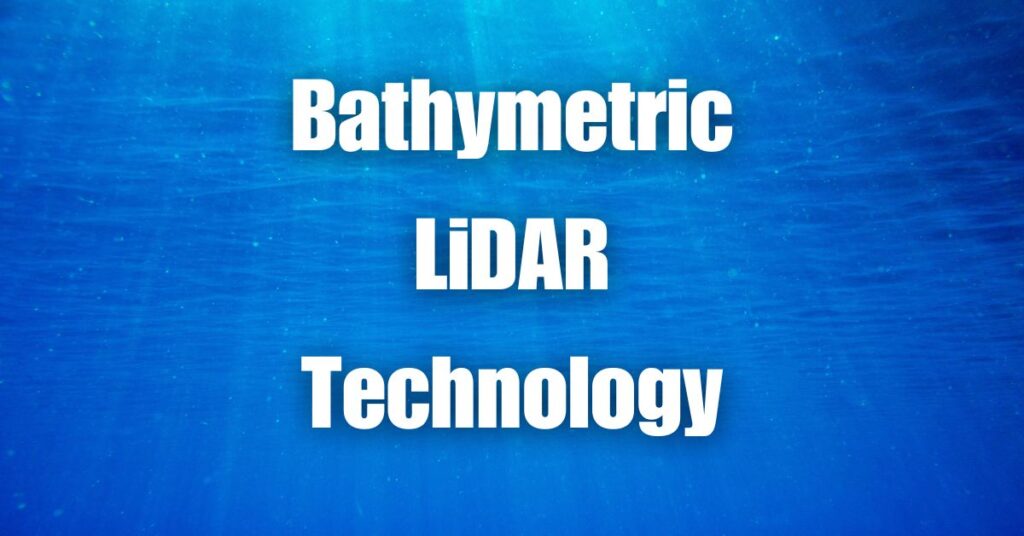Drones are revolutionizing industries worldwide, and the Oklahoma energy sector is no exception. As a local company, Blue Falcon Aerial understands the unique challenges faced by energy companies in the region and how drones can make a significant difference. In this article, we’ll explore the applications, benefits, and regulations of drones in the Oklahoma energy sector, demonstrating how this cutting-edge technology is transforming the industry and why it’s essential for local businesses to adapt.
Overview of Oklahoma Energy Sector
Oklahoma is a significant player in the United States energy sector, with a diverse mix of energy resources and industries. The state is rich in fossil fuels such as crude oil and natural gas, and it is also a leading producer of renewable energy, particularly wind power. In this section, we’ll provide an overview of the primary energy industries in Oklahoma and their importance to the state’s economy.
Oil and Gas
Oklahoma has a long history of oil and gas production, dating back to the early 1900s. Today, the state ranks among the top five oil and natural gas producers in the United States. The oil and gas industry is a major contributor to Oklahoma’s economy, providing thousands of jobs and generating significant tax revenue.
Exploration, drilling, and production of oil and gas require a complex infrastructure of wells, pipelines, processing facilities, and storage systems. Maintaining and monitoring this infrastructure is essential for ensuring safe and efficient operations, as well as minimizing environmental impacts.
Renewable Energy
Oklahoma has made significant strides in renewable energy production in recent years, particularly in the area of wind power. The state ranks among the top three states in the nation for installed wind capacity, with numerous wind farms spread across its landscape. Wind energy provides a clean and sustainable alternative to fossil fuels and helps reduce greenhouse gas emissions.
In addition to wind energy, Oklahoma has also started to tap into solar power, although it is still a relatively small contributor to the state’s overall energy mix. As solar technology advances and costs decrease, it’s expected that solar power will play a more prominent role in Oklahoma’s energy future.
Types of Drones Used in the Energy Sector
Various drone models and configurations are available for use in the energy sector, each offering unique capabilities and advantages. In this section, we’ll discuss some of the most common types of drones used for energy applications, as well as their key features and benefits.
Fixed-Wing Drones
Fixed-wing drones resemble small airplanes and are designed for long-range flights and extended missions. They can cover vast distances and stay airborne for several hours, making them ideal for large-scale surveying, mapping, and monitoring tasks. Fixed-wing drones are particularly useful for inspecting pipelines, transmission lines, and other extensive infrastructure components.
Multi-Rotor Drones
Multi-rotor drones, such as quadcopters and hexacopters, are the most common type of drone used in the energy sector. They offer excellent maneuverability, stability, and precision, allowing them to hover in place and capture high-resolution images and data. Multi-rotor drones are well-suited for inspecting energy infrastructure, such as power lines, wind turbines, and solar panels, where close-up inspections and detailed imaging are required.
Hybrid Drones
Hybrid drones combine the best features of fixed-wing and multi-rotor designs, offering both long-range capabilities and precise maneuverability. These drones can cover large areas quickly, then transition to a hover mode to perform detailed inspections. Hybrid drones are particularly useful for inspecting energy infrastructure in remote or difficult-to-reach locations, where both efficiency and accuracy are critical.
Each type of drone has its strengths and weaknesses, and selecting the appropriate drone for a specific energy application requires careful consideration of factors such as flight range, payload capacity, and imaging requirements.
Applications of Drones in the Energy Sector
Drones have become invaluable tools for the energy sector, offering numerous applications that can streamline operations, reduce costs, and improve safety. In this section, we’ll explore the various ways in which drones are used in the energy industry, including inspection and maintenance, surveying and mapping, environmental monitoring, and emergency response.
Inspection and Maintenance
Drones play a crucial role in the inspection and maintenance of energy infrastructure, such as power lines, wind turbines, solar panels, and oil and gas facilities. Equipped with high-resolution cameras, thermal imaging, and other advanced sensors, drones can quickly and accurately detect potential issues, reducing the risk of equipment failure, power outages, and environmental damage.
Power Line Inspections
Drones significantly streamline power line inspections by capturing detailed images from various angles, allowing technicians to identify damaged or worn-out components without the need for physical climbing or ground-based observations. This not only saves time and money but also minimizes the risk of accidents and enhances overall grid reliability.
Wind Turbine Inspections
Drones are revolutionizing wind turbine inspections by replacing the need for technicians to climb the turbines. Instead, drones can safely and efficiently inspect the blades, towers, and other components, detecting cracks, erosion, and other issues that may affect the turbine’s performance. This not only saves time and money but also minimizes the risk of accidents and injuries.
Solar Panel Inspections
Regular inspections of solar panels are essential to ensure optimal performance and energy output. Drones can quickly and efficiently assess large-scale solar installations, identifying issues such as dirt, debris, or damaged panels that may hinder energy production. By using thermal imaging, drones can also detect hotspots caused by faulty connections or malfunctioning components.
Oil and Gas Facility Inspections
Drones have become an invaluable asset for inspecting oil and gas infrastructure, such as wells, pipelines, processing facilities, and storage systems. They can quickly cover large areas, providing detailed images and data that help operators identify potential leaks, corrosion, and other issues that may pose safety or environmental risks.
Surveying and Mapping
Drones are widely used for surveying and mapping tasks in the energy sector, providing accurate and up-to-date geospatial data that helps companies plan and optimize their operations. By capturing high-resolution aerial images, drones can generate detailed topographic maps, 3D models, and digital elevation models, which are essential for planning new infrastructure, monitoring land changes, and assessing the impact of natural disasters.
Environmental Monitoring
Drones play an essential role in environmental monitoring within the energy sector, helping companies track and manage their environmental footprint. Equipped with specialized sensors, drones can monitor air quality, water quality, vegetation growth, and wildlife habitats, providing valuable data for environmental impact assessments and compliance reporting.
Emergency Response
In the event of natural disasters, accidents, or other emergencies, drones can provide critical situational awareness and support to energy companies and first responders. They can quickly survey affected areas, locate damaged infrastructure, and assist in coordinating response efforts, helping to minimize the impact on communities and the environment.
Benefits of Using Drones in the Oklahoma Energy Sector
The use of drones in the Oklahoma energy sector offers numerous benefits, including cost savings, improved safety, enhanced data collection, and faster decision-making. In this section, we’ll discuss these benefits in more detail and explain how they contribute to more efficient and sustainable energy operations.
Cost Savings
One of the most significant benefits of using drones in the Oklahoma energy sector is the potential cost savings. Traditional inspection methods, such as helicopter flights or manual labor, can be expensive and time-consuming. Drones can complete inspections faster and at a fraction of the cost, reducing the financial burden on energy companies.
Improved Safety
Drones can significantly enhance safety in the energy sector. By replacing manual inspections that require technicians to climb structures or work in hazardous environments, drones can minimize the risk of accidents and injuries. This not only protects the workforce but also helps companies avoid costly downtime and potential legal liabilities.
Enhanced Data Collection
Drones equipped with advanced sensors and imaging systems can collect high-quality data quickly and efficiently. This enables energy companies to gain valuable insights into the condition of their assets, identify potential issues early, and make informed decisions about maintenance and repairs. Moreover, drones can access hard-to-reach or dangerous locations, providing a more comprehensive view of energy infrastructure and its surroundings.
Faster Decision-making
By providing real-time data and high-resolution imagery, drones can expedite decision-making processes in the energy sector. Companies can quickly assess the condition of their assets, prioritize maintenance activities, and plan new projects with greater accuracy and confidence. This leads to more efficient operations, reduced downtime, and improved overall performance.
In summary, the use of drones in the Oklahoma energy sector offers numerous advantages that help improve the efficiency, safety, and sustainability of energy operations. As drone technology continues to advance, it’s expected that their applications and benefits will further expand, making them an indispensable tool for the energy industry.
Drone Regulations and Licensing in Oklahoma’s Energy Sector
It is essential to be aware of the regulatory framework surrounding the use of drones in the Oklahoma energy sector to ensure safe and legal operations. In this section, we’ll discuss the Federal Aviation Administration (FAA) regulations, Oklahoma state laws, and the process of obtaining a drone pilot license for commercial use in the energy sector.
Federal Aviation Administration (FAA) Regulations
The FAA is responsible for regulating the commercial use of drones in the United States, including the energy sector. Key FAA regulations for commercial drone operations include:
- Obtaining a Part 107 Remote Pilot Certificate, also known as a drone pilot license
- Flying drones under 55 pounds, including payload
- Flying during daylight hours or civil twilight (30 minutes before sunrise or after sunset) with appropriate lighting
- Maintaining a visual line of sight with the drone
- Flying below 400 feet above ground level, or higher if the drone remains within 400 feet of a structure
- Not flying over people or moving vehicles
- Giving right-of-way to manned aircraft
These regulations apply to all commercial drone operations in the United States, including those conducted in Oklahoma’s energy sector.
Oklahoma State Laws
In addition to FAA regulations, drone operators in Oklahoma must also comply with state laws governing drone use. The Oklahoma Aircraft and Space Vehicles Act includes several provisions relating to drones, such as:
- Requiring drone operators to obtain consent before capturing images or data on private property
- Prohibiting the use of drones for surveillance, harassment, or other illegal activities
- Requiring drone operators to comply with federal and local laws, including privacy and trespassing laws
It is crucial to be familiar with both federal and state regulations to ensure legal and responsible drone operations in Oklahoma’s energy sector.
Obtaining a Drone Pilot License in Oklahoma
To operate a drone commercially in the energy sector, pilots must obtain a Part 107 Remote Pilot Certificate from the FAA. The process involves:
- Studying for the FAA Part 107 Knowledge Test, which covers topics such as airspace, regulations, weather, and drone operations
- Scheduling and taking the Knowledge Test at an FAA-approved testing center
- Passing the Knowledge Test with a score of 70% or higher
- Completing an FAA Airman Certificate and/or Rating Application (known as IACRA) to obtain the Remote Pilot Certificate
Once a drone pilot has successfully obtained their Remote Pilot Certificate, they can legally operate drones for commercial purposes in the energy sector, as long as they comply with all FAA regulations and Oklahoma state laws.
Top Drone Models for Energy Sector Inspections in Oklahoma
Selecting the right drone model is crucial for ensuring efficient and accurate inspections in the energy sector. In this section, we’ll discuss some of the top drone models suitable for inspecting energy infrastructure in Oklahoma, including their key features and capabilities.
DJI Matrice 300 RTK
The DJI Matrice 300 RTK is a versatile and powerful drone designed for industrial applications. Its features include:
- Long flight time of up to 55 minutes
- Advanced obstacle avoidance system
- Multiple payload configurations, including high-resolution cameras and thermal imaging sensors
- RTK (Real-Time Kinematic) GPS for improved positioning accuracy
This drone is ideal for inspecting power lines, wind turbines, solar panels, and oil and gas facilities, thanks to its durability, flexibility, and advanced imaging capabilities.
Parrot Anafi USA
The Parrot Anafi USA is a compact and lightweight drone designed for professional use, offering:
- 32x zoom capabilities, allowing for detailed inspections without getting too close to infrastructure
- High-resolution 4K camera and thermal imaging
- Easy-to-use flight controls and software for streamlined operations
- Robust data security features to protect sensitive information
This drone is suitable for various energy sector inspections, including power lines, solar panels, and wind turbines, due to its portability and powerful imaging capabilities.
senseFly eBee X
The senseFly eBee X is a fixed-wing drone designed for surveying and mapping applications. Its key features include:
- Long flight time of up to 90 minutes, allowing for large-area coverage
- High-resolution cameras and multispectral sensors for detailed imaging and data collection
- Integration with professional mapping and surveying software
- Compact and lightweight design for easy transportation and deployment
This drone is particularly useful for surveying and mapping energy sector projects, including new infrastructure planning, environmental monitoring, and land management.
Drone Inspection Costs for Oklahoma Energy Companies
The cost of drone inspections for Oklahoma energy companies can vary widely depending on several factors, such as the size and complexity of the project, the drone equipment and sensors required, and the level of expertise needed to analyze the collected data. In this section, we’ll provide an overview of the factors that influence drone inspection costs and how they compare to traditional inspection methods.
Factors Influencing Drone Inspection Costs
- Project size and complexity: Larger or more complex projects may require more flight time, additional drone pilots, or specialized equipment, increasing the overall cost.
- Equipment and sensors: High-resolution cameras, thermal imaging sensors, and other advanced technologies can improve inspection accuracy but may also add to the cost.
- Data analysis and reporting: Expert analysis of the collected data and the creation of detailed reports can be time-consuming and require specialized knowledge, impacting the cost of drone inspections.
- Regulatory compliance: Ensuring compliance with FAA regulations and Oklahoma state laws may require additional planning, coordination, and documentation, which can influence the cost.
Comparing Drone Inspection Costs to Traditional Methods
Despite these factors, drone inspections are generally more cost-effective than traditional inspection methods, such as helicopter flights or manual labor. Drones can complete inspections faster and with fewer personnel, reducing labor and equipment costs. Additionally, drones can help identify potential issues early, potentially saving energy companies money on costly repairs or downtime.
Ultimately, the cost of drone inspections for Oklahoma energy companies can vary, but the investment is often justified by the numerous benefits, including improved efficiency, safety, and data collection.
Integrating Drone Technology in Oklahoma’s Energy Sector
To fully leverage the benefits of drones in Oklahoma’s energy sector, companies must effectively integrate drone technology into their existing operations and workflows. In this section, we’ll discuss several strategies for successfully incorporating drones into the energy sector.
Develop a Comprehensive Drone Program
Creating a comprehensive drone program involves planning, setting objectives, and establishing guidelines for the use of drone technology within the organization. This may include:
- Identifying specific use cases for drones, such as inspections, surveys, or environmental monitoring
- Defining roles and responsibilities for drone pilots, data analysts, and other key personnel
- Establishing standard operating procedures (SOPs) for drone operations, including safety protocols and regulatory compliance
- Developing a training program for drone pilots and other staff involved in drone operations
Invest in the Right Equipment and Software
Selecting the appropriate drone models, sensors, and software is crucial for successful integration. This may involve:
- Evaluating different drone models based on their features, capabilities, and suitability for specific tasks
- Identifying the necessary sensors and imaging systems to collect the required data for each application
- Choosing software solutions for flight planning, data processing, and analysis that are compatible with the company’s existing systems
Foster Collaboration and Communication
Effective collaboration and communication between various stakeholders, such as drone pilots, data analysts, and decision-makers, are essential for successful integration. Strategies may include:
- Establishing channels for sharing information, such as regular meetings or dedicated communication platforms
- Encouraging cross-functional collaboration to ensure that insights gained from drone operations are effectively integrated into decision-making processes
- Sharing best practices and lessons learned to continually improve the use of drone technology
Blue Falcon Aerial for Orthomosaic and LiDAR Projects
Blue Falcon Aerial, an Oklahoma-based company specializing in drone services for the energy sector, offers a range of solutions to help companies integrate drone technology into their operations. For projects requiring orthomosaic mapping and LiDAR (Light Detection and Ranging) data collection, Blue Falcon Aerial is an excellent choice, as they have extensive experience in these areas.
Orthomosaic mapping combines high-resolution aerial imagery to create a single, seamless, and accurate representation of an area, while LiDAR uses laser technology to create precise three-dimensional models of terrain and infrastructure. These technologies have numerous applications in the energy sector, such as site planning, asset management, and environmental monitoring.
Blue Falcon Aerial’s services for the oil and gas industry (source) include pipeline inspections, well pad and facility mapping, and environmental assessments. They also offer a range of deliverables (source), such as orthomosaic maps, point clouds, digital surface models, and volumetric calculations, to help energy companies make informed decisions based on accurate data.
Conclusion
Drones are transforming the Oklahoma energy sector by offering safer, faster, and more efficient solutions for inspections, surveys, and environmental monitoring. To fully realize these benefits, companies must invest in the right equipment and software, develop a comprehensive drone program, and foster collaboration and communication among stakeholders.
If you’re considering integrating drone technology into your energy operations, Blue Falcon Aerial is a trusted local partner with extensive experience in orthomosaic mapping and LiDAR data collection. To learn more about their services and how they can help your Oklahoma-based energy company, visit https://www.bluefalconaerial.com/ and get in touch with their team of experts for any drone-related services you may need.




